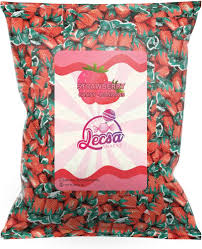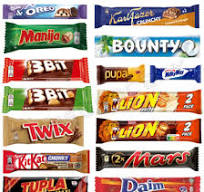The Art of Design: Crafting Beauty and Functionality
Design is the silent ambassador of any brand, product, or idea. It is the visual language that communicates with us before we even realize it, evoking emotions, setting moods, and guiding our interactions. From the sleek lines of a modern smartphone to the intricate patterns adorning a traditional tapestry, design surrounds us in myriad forms and influences our perceptions in profound ways.
At its core, design is a harmonious blend of creativity and functionality. It is the marriage of aesthetics and purpose, where form follows function to create an experience that is not only visually pleasing but also practical and user-friendly. Whether it’s the layout of a website that guides our navigation or the ergonomic contours of a chair that cradle our bodies, thoughtful design enhances our lives in ways both subtle and profound.
Design also has the power to transcend boundaries and bridge cultures. It is a universal language that speaks to our shared humanity, transcending linguistic barriers to connect us on a deeper level. Through design, we can celebrate diversity, preserve traditions, and spark innovation as we draw inspiration from different sources and reinterpret them in new and exciting ways.
From the ornate architecture of ancient civilizations to the sleek interfaces of cutting-edge technology, design evolves with us, reflecting our values, aspirations, and ingenuity. It is a testament to human creativity and ingenuity, showcasing our ability to transform raw materials into objects of beauty and utility that enrich our lives.
So next time you admire a well-crafted logo, marvel at an innovative product design, or find yourself captivated by an exquisite piece of art, take a moment to appreciate the thoughtfulness and skill that went into creating it. Design is not just about appearances; it is about storytelling, problem-solving, and shaping the world around us in ways that inspire awe and wonder.
7 Key Benefits of Effective Design in Enhancing User Experience and Brand Identity
- Enhances user experience
- Communicates brand identity effectively
- Improves functionality and usability
- Captivates attention and creates interest
- Fosters creativity and innovation
- Elevates perceived value of products or services
- Creates a memorable and lasting impression
4 Common Drawbacks of Design: Subjectivity, Expense, Trends, and Upkeep
Enhances user experience
Design plays a crucial role in enhancing user experience by creating intuitive interfaces, visually appealing layouts, and seamless interactions that make navigating a website or using a product a delight. Thoughtfully designed elements such as clear navigation menus, engaging visuals, and user-friendly features not only make it easier for users to accomplish their tasks but also leave a lasting positive impression, fostering loyalty and satisfaction. Good design anticipates user needs, guides them effortlessly through their journey, and ultimately elevates the overall experience to ensure that every interaction is smooth, enjoyable, and memorable.
Communicates brand identity effectively
Effective design serves as a powerful tool in communicating brand identity. Through carefully crafted visuals, typography, color schemes, and overall aesthetic elements, design can convey the essence of a brand’s values, personality, and unique selling points to its target audience. Consistent and thoughtful design choices help establish brand recognition and differentiate a company from its competitors, fostering trust and loyalty among consumers. By creating a cohesive visual language that resonates with the brand’s mission and vision, design plays a crucial role in shaping how a brand is perceived in the minds of consumers.
Improves functionality and usability
Design plays a crucial role in enhancing functionality and usability across various products and platforms. By carefully considering user needs and behaviors, designers can create intuitive interfaces, ergonomic products, and efficient systems that streamline tasks and improve overall user experience. Thoughtful design not only makes products easier to use but also ensures that they perform their intended functions seamlessly, ultimately leading to increased efficiency, productivity, and satisfaction for users.
Captivates attention and creates interest
Designs possess the remarkable ability to captivate attention and ignite interest effortlessly. Whether it’s a striking logo that catches the eye, an intricately designed website layout that draws users in, or a visually appealing product packaging that piques curiosity, well-crafted designs have the power to command focus and spark intrigue. By leveraging elements such as color, typography, imagery, and layout, designers can create visual experiences that not only attract viewers but also compel them to explore further, fostering engagement and leaving a lasting impression.
Fosters creativity and innovation
Design serves as a catalyst for creativity and innovation, igniting the spark of imagination and pushing boundaries to new horizons. By challenging conventional norms and exploring fresh perspectives, design encourages us to think outside the box, experiment with novel ideas, and envision possibilities that were previously unseen. Through this process of creative exploration, we not only unlock new solutions to existing problems but also pave the way for groundbreaking inventions and transformative breakthroughs that shape the future. Design fuels our inventive spirit, propelling us towards uncharted territories where imagination knows no bounds.
Elevates perceived value of products or services
Effective design has the remarkable ability to elevate the perceived value of products or services, creating a sense of prestige, quality, and desirability in the eyes of consumers. Thoughtfully crafted aesthetics and functional design elements can convey a sense of sophistication and attention to detail, making a product or service appear more valuable and enticing to potential customers. By investing in well-executed design, businesses can enhance their brand image, command higher prices, and cultivate a loyal customer base drawn to the perceived excellence and exclusivity associated with their offerings.
Creates a memorable and lasting impression
Designs have the remarkable ability to create a memorable and lasting impression that lingers in our minds long after the initial encounter. Whether it’s a striking logo that instantly captures our attention or a beautifully designed product packaging that stands out on the shelves, well-crafted designs have the power to leave a lasting mark on our consciousness. By evoking emotions, sparking curiosity, and conveying messages with clarity and impact, designs not only enhance the visual appeal but also engrave themselves in our memories, shaping our perceptions and influencing our choices in profound ways.
Subjectivity
Subjectivity is a notable con when it comes to designs, as individual preferences play a significant role in shaping perceptions. What one person finds visually appealing, another may deem unattractive. This inherent subjectivity can result in disagreements or conflicting interpretations when it comes to evaluating and appreciating designs. While diversity in preferences can foster creativity and innovation, it also poses a challenge in achieving universal acceptance or consensus in design choices. Designers must navigate this subjective landscape carefully, balancing personal tastes with broader audience expectations to create impactful and inclusive designs that resonate with diverse audiences.
Costly
The cost factor poses a significant challenge when it comes to intricate or customized designs, as the resources and expertise required to bring these visions to life can be substantial. Whether it involves intricate detailing on a product or tailoring a unique visual identity for a brand, the investment in time, materials, and skilled labor can quickly add up, impacting budget constraints and posing a conundrum for decision-makers. Balancing the allure of bespoke designs with the practicalities of financial limitations is a delicate dance that organizations and individuals often grapple with when striving for excellence in design.
Trend-driven
One notable drawback of design trends is their inherently transient nature, which can lead to a loss of uniqueness and originality over time. By closely adhering to popular design trends, there is a risk of blending in with the crowd rather than standing out as a distinctive and innovative entity. Trends come and go, and what may be considered cutting-edge today could quickly become outdated tomorrow, potentially diluting the individuality and long-term relevance of a design. It is essential for designers to strike a balance between incorporating current trends and infusing their creations with timeless elements that ensure enduring appeal and authenticity.
Maintenance
Complex designs, while visually captivating and innovative, come with the con of requiring frequent updates and maintenance to uphold their effectiveness and relevance. The intricacies and layers of intricate design elements can make it challenging to keep up with changing trends, technological advancements, and user preferences. This demand for continual upkeep can be time-consuming and resource-intensive, posing a significant drawback for businesses and individuals seeking long-term sustainability in their design choices.




